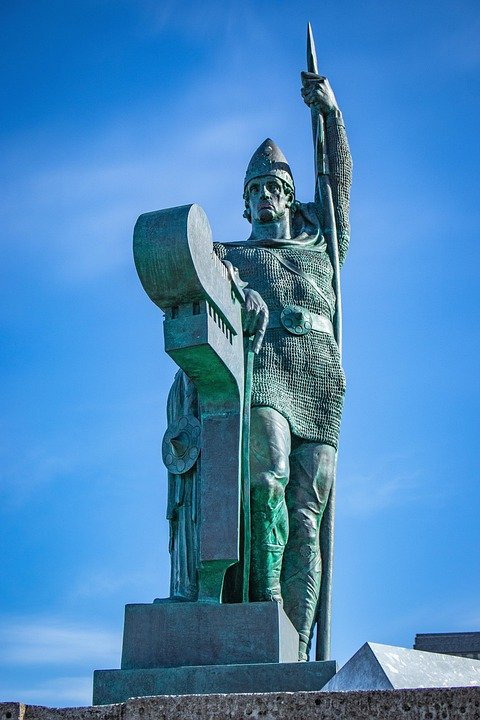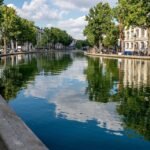Wondering when to go to Reykjavik without running into huge crowds or bad weather? The truth is, the ideal time to visit this vibrant capital of Iceland depends on a mix of factors: the weather, your budget, local events, and, of course, what you want to do while you're there. So, let's dive into the details and help you find that perfect time to experience Reykjavik.
Overview of Reykjavik’s Climate
First off, understanding the weather in Reykjavik is key to planning your trip. Generally, the city experiences a subarctic climate, which means you'll encounter both wonderfully dry and quite wet spells. Winter months can be chilly, with temperatures often hovering around freezing, while summers are mild and surprisingly pleasant, with average temperatures ranging from 10°C to 15°C (50°F to 59°F).
Rain isn't uncommon at any time of year, but summer sees more sunshine, especially between June and August. Keep in mind that the weather can be unpredictable—you might experience all four seasons in a single day, so layering is always a good idea!
Month-by-Month Breakdown
Winter: December – February
Weather: Expect cold temperatures ranging from -1°C to 4°C (30°F to 39°F), with snow possible.
Events: The winter solstice and Christmas markets add charm to this season. If you're up for it, the Northern Lights usually make an appearance.
Pros: Fewer tourists mean cheaper accommodation and shorter lines.
Cons: Limited daylight hours (only about 4-5 hours of sunlight).
Best For: Budget travelers and those chasing the Northern Lights, but be prepared for the cold!
Spring: March – May
Weather: Gradual warming, with March still chilly (around 0°C) and May getting up to 10°C (50°F).
Events: The annual Reykjavik Art Festival kicks off in May, showcasing local and international talent.
Pros: Beautiful blooms and increasing daylight hours. Plus, there's a chance to see some late-season Northern Lights in early spring.
Cons: March can still be wintry, so pack accordingly.
Best For: Early adventurers and art lovers looking for cultural experiences.
Summer: June – August
Weather: This is peak season, with temperatures averaging 10°C to 15°C (50°F to 59°F) but can occasionally reach higher.
Events: Reykjavik Culture Night in August celebrates music, art, and food throughout the city.
Pros: Long days—close to 24 hours of daylight in June—perfect for outdoor activities like hiking and whale watching.
Cons: Higher prices and larger crowds, especially in July.
Best For: Outdoor enthusiasts and festival-goers who want to soak up the midnight sun.
Autumn: September – November
Weather: Cooling off significantly, with temperatures dropping from around 10°C in September to closer to 0°C by November.
Events: The Reykjavik International Film Festival in late September draws cinema lovers from all around.
Pros: Fewer tourists post-summer means good deals, and autumn colors are stunning—ideal for photographers.
Cons: Rain becomes more frequent, especially in October.
Best For: Those who want a quieter experience with great photo opportunities.
Tips Based on Travel Style
Your travel style greatly influences the ideal time to visit Reykjavik:
-
Budget Travel: Late fall and winter are best for saving money. November has fewer visitors and offers good deals on flights and accommodations.
-
Avoiding Crowds: Early spring or late September/October can be perfect. You get the benefit of fewer tourists while still enjoying decent weather conditions.
-
Outdoor Activities and Cultural Events: The summer months are ideal if you love hiking or participating in local festivals. However, for Northern Lights or winter sports, winter is your go-to.
- Romantic Getaways or Solo Trips: Aim for late autumn for a cozy vibe or in summer if you're wanting to meet other travelers and immerse yourself in the buzzing festival atmosphere.
Finding Your Perfect Time
Ultimately, it really depends on what kind of experience you're looking for. Some travelers love December for its quiet vibe and holiday charm, while others aim for the thrilling festivals in August. If you're keen on a quieter escape, consider planning your visit during the shoulder months of late spring or early fall.
No matter when you decide to visit, Reykjavik's enchanting landscapes, intriguing culture, and rich history await.
FAQ
Is April a good time to visit Reykjavik?
It can be! April is a transitional month, offering both winter and early spring experiences. You might still catch the Northern Lights while enjoying slightly warmer days.
When is the rainy season in Reykjavik?
Rain can occur any month, but the wettest periods are typically during autumn (September to October) and early spring.
What's the cheapest time to visit Reykjavik?
Late fall and winter months, especially November, usually see lower prices for flights and accommodations.
What's the peak season in Reykjavik?
The peak season is during the summer months (June to August) when tourists flock for the mild weather and long days.
Now that you're equipped with this information, go ahead and start planning that dream trip to Reykjavik. Whether you're craving breathtaking natural phenomena or a bustling urban experience, you'll find your ideal moment here!








